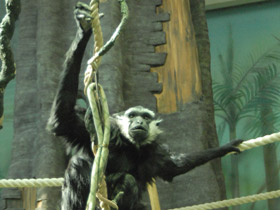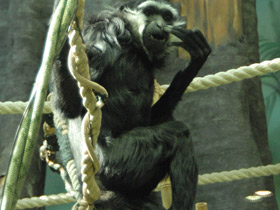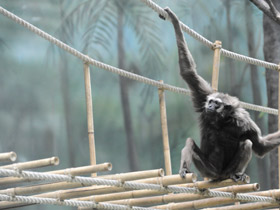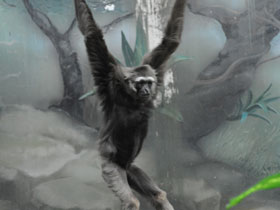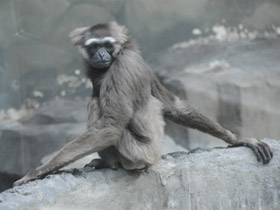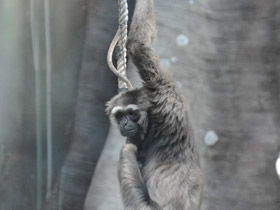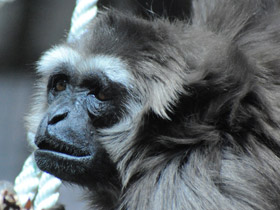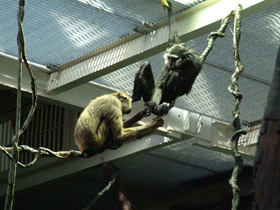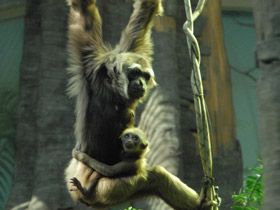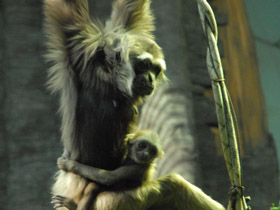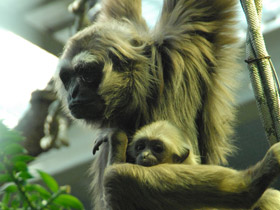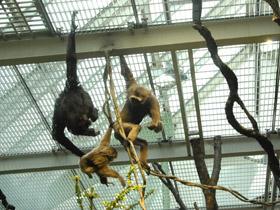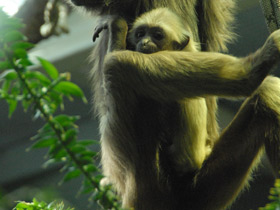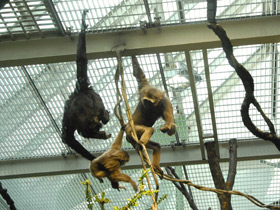El gibón ágil o gibón de manos negras (Hylobates agilis)
The agile gibbon (Hylobates agilis), also known as the black-handed gibbon, is an Old World primate in the gibbon family. It is found in Indonesia on the island of Sumatra, Malaysia, and southern Thailand. The species is listed as endangered on the IUCN Red List due to habitat destruction and the pet trade.
Taxonomy
The species is generally thought not to have subspecies, but some experts recognise a mountain form and a lowland form.
- Mountain agile gibbon, Hylobates agilis agilis;
- Lowland agile gibbon, Hylobates agilis unko.
Appearance and distribution
Hylobates agilis is a species of hominoid primate of the family Hylobatidae. They are relatively small, slender and agile primates with a dense, fluffy coat. Their body length varies between 44 and 63.5 cm and their weight ranges from 4 to 6 kg (5 kg on average, although in captivity they can weigh up to 8 kg). Hylobates agilis is not characterised by sexual dimorphism in size, although males are on average slightly larger than females, but females may weigh more than males.
It is common in Indonesia, on the island of Sumatra, and there is a small population on the Malay Peninsula and in southern Thailand near the Malaysian border. It is rare and is listed as endangered on the IUCN Red List.
A characteristic feature of Hylobates agilis is the white eyebrows (a band of white hairs above the eyes on the forehead). In addition, males have contrasting cheek colours, with white, greyish or slightly reddish hairs on a common background.
Behaviour
Like all gibbons, Hylobates agilis lives in small family groups. Each group occupies an area of about 25 hectares, which it defends from its neighbours "through" noisy morning duos. Usually only the adult pair is engaged in singing, but sometimes the juveniles also join in. Adult pairs of Hylobates agilis play noisy and complex duets in which the female predominates.
The song always consists of separate male and female elements. The song is usually heard at dawn, but can also be heard at other times of the day.
Reproduction
The female, after seven months of gestation, gives birth to a single calf, which is fed on mother's milk for almost two years, after which it switches completely to the diet of adult animals. Young Hylobates agilis are physically independent at three years of age and mature at six. However, they find mates and do not usually begin to live independently until they are eight years old, or young Hylobates agilis remain with the parent group until they are ten years old. Their reproductive rate is very low, with a female giving birth to a calf in three years at best.

















